|
Outer Hebrides are Islands Beyond Compare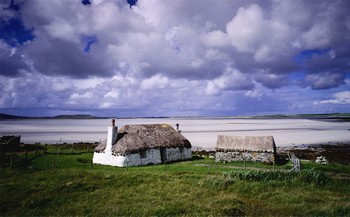
The Hebrides are separated into two groups, the Outer Hebrides and the Inner Hebrides. The Inner Hebrides are comprised of Islay, Jura, Skye, Mull, Rassay, Staffa and the Small Isles. The Outer Hebridean islands are Barra, Beneray, Harris, Lewis, North Uist, South Uist and St. Kilda. They are a 130 mile long island chain separated from the mainland by the Inner Hebrides and the bodies of water named the Minch, The Little Minch and the Sea of the Hebrides. The Hebrides as a whole are sometimes referred to as "The Western Isles" but this term is more accurately applied just to the Outer Hebrides, which were once known as "The Long Island." The name "Hebrides" probably comes from Ebudae, the Roman name for the islands. Settlements here date back some 8000 years. 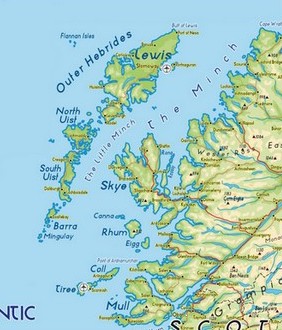
The unpopulated islands are too numerous to list here but include such islands as Orosay, Ensay, Heelisaya and Campay. Three of these uninhabited islands, namely Pabbay, Mingulay and Berneray, have been set aside as bird sanctuaries, and are breeding grounds for such wonderful birds as puffins, arctic tern, black guillemot and storm petrel among others. You can arrange a cruise to Mingulay through the tourist information centre at 01871-810336. The season for nesting puffins is from June to early August. In the sixth century St. Columba arrived on these islands bringing Christianity
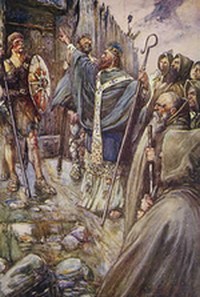
(Interestingly enough St. Columba made the first known reference to the the fabled Loch Ness monster, having made the sign of the cross to send it away after it had attacked and killed a man. According to this story it was swimming in the River Ness rather than the loch itself.) Still revered today, St. Columba eventually died in the abbey he created on the island of Iona.
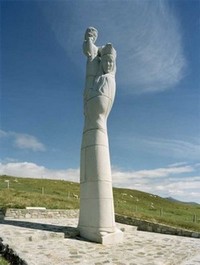
Gaelic is commonly spoken here on an everyday basis, and religious feelings run deep. The Sabbath is strictly observed and no public transport runs on a Sunday, although if you need fuel for your car on that day, Engbertson's garage on Stornoway is probably open, but that's about it!
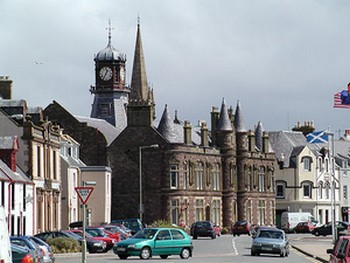
While you are on Lewis, visit the Museum nan Eilean on Francis Street, which will give you an overview of the long history of the Outer Hebrides from the first human settlements some 9000 years ago to the 20th century. Admission is free and it's open Monday - Saturday. Like the other outlying Scottish Islands, the Outer Hebrides have reminders of a prehistoric past, and probably the best known are the Callanish Standing Stones, located west of Stornoway about 15 miles, on a dramatic promontory which overlooks Loch Roag. 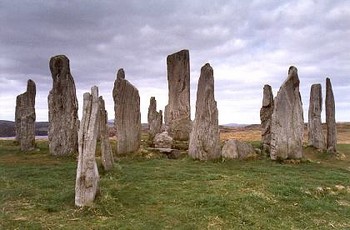
A calendar system based on the moon has been a popular theory, but probably no-one will ever know for sure as the people who built them left no written records. Most roads are single lane highways throughout the islands and the best scenery is probably on the stretch from Barvas to Mealista on the west coast.
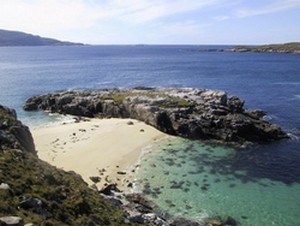
The Outer Hebrides is also a paradise for wildlife such as red deer and golden eagles 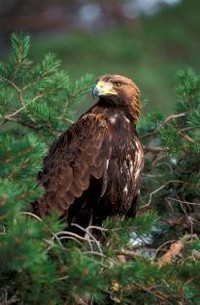
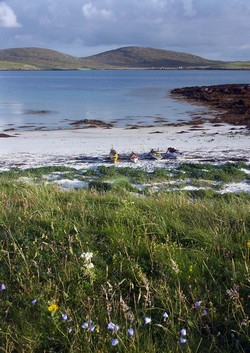
If a deserted beach is what you crave, you will find them on South Harris. The beaches of Luskentyre and Scarasta are the perfect place to be alone, or to be alone with someone.. 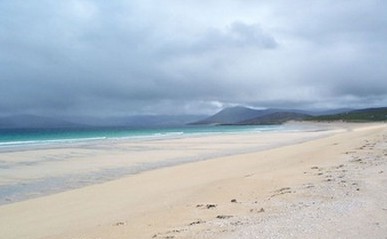
Ferries from the mainland run regularly and their routes are as follows : from Oban to Barra and Lochboisdale on South Uist The route from Tiree to Castlebay on Barra runs in the summer only. The airports are on Stornoway (Lewis)and Benbecula and Barra. Daily flights arrive from Edinburgh and Inverness, and from Glasgow Monday to Saturday. Contact Loganair at www.britishairways.com or Highland Airways at www.highlandairways.co.uk and they can give you more details. There is a great deal more to tell about these islands, but for the meantime I want to leave you with this picture of Tarbert, on Harris and hope it will give you some idea of the peace and tranquility that pervade these islands, so that you may find some also.. 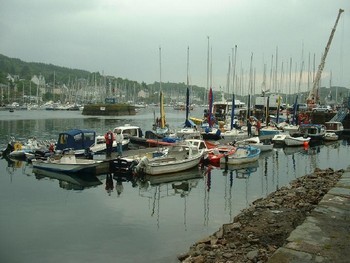
|
